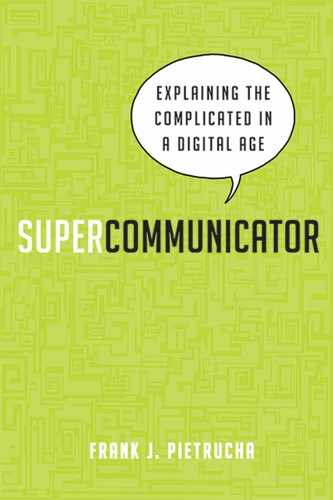Researching Cultural Issues
Food, says former National Public Radio and BBC Radio host Rebecca Roberts, helps her explain scientific and technical subjects to her audiences. Food is something with which we all have first-hand experience and something we don't have to think about too deeply. The various textures, tastes, aromas, and looks of food offer an array of sensory experiences for all of us. Food can be bland, like a slice of processed white bread, or spicy, like a pungent curry. Whole grains can remind us of gritty sandpaper, while whipped cream can make us dream of fluffy clouds. Food is a great way to connect with people because we instantly recognize qualities we share as a culture through our culinary experiences.
Roberts says that references to food help her audience visualize scientific breakthroughs and novel engineering accomplishments. On radio she can't show photos, illustrations, or videos. She relies solely on language and sound to communicate whatever topic she is explaining. Roberts became, as she puts it, “a big fan of food analogies” while working as a science and technology reporter for BBC's The World: “My audience was educated but not necessarily knowledgeable in the areas of science and technology. I had to find ways to create a mental image that listeners could latch on to.”
Roberts leans heavily on references to food because of the endless descriptive possibilities food provides. And within the realm of food, condiments are her favorite sub-category. For example, if Roberts wants to talk about a substance being sticky, she can make a natural connection to maple syrup. The mental image of maple syrup helps most North Americans viscerally and immediately understand the sticky quality of the substance Roberts is describing. In a flash she has succeeded in giving her audience an image they can grasp.
Of course, her approach only works when there is a common understanding or a shared experience of the world. It can become tricky across cultures. While maple syrup may work well for listeners tuning into Roberts's program in countries where people eat pancakes and waffles, maple syrup might not be a particularly good basis of comparison if she were speaking to an audience in rural China. The Canadians have tried to create a market for maple syrup in China, but from 2001 to 2008, Canada exported less than 40,000 liters of the sticky stuff to that country. Most Chinese, it's safe to say, have had little experience with the product and probably couldn't relate personally to a description dependent on maple syrup for understanding how sticky something is. Maple syrup is not going to work in China. A great image or analogy in North America could become a big mistake elsewhere.
Research is essential to understand your audience's level of cultural awareness. The Internet has made the world a smaller place by making it easier for people to connect. This is great—but it also means we need to consider that not everyone who will view our web pages or see our videos will comprehend certain references. There are cultural traits we need to think about if our audience comes from a different part of the country or different country altogether. In the digital age, communicators need to be more sensitive to the fact that their audiences may approach their content from a completely different viewpoint.
Look for Shared Experiences with Your Audience
Some experiences are universal and others are local. Consider this list of categories:
- THE HUMAN EXPERIENCE. There are some experiences that all 7 billion people living on Planet Earth share. Bodily functions are something that all of us can understand, for better or for worse. Likewise, we all understand the daily rising and setting of the sun, the passing of a year, and the need to eat.
- A SLICE OF LIFE. Recognizing products in a supermarket and the frustrations of highway traffic are among the situations that we might all encounter on any given day. Some of these experiences can be culturally based but still appeal to a general population.
- POPULAR CULTURE. Audiences readily grasp concepts when they are compared to television shows or movies, for example. But make sure that your audience is familiar with the base comparison. You can't necessarily expect someone living in Mumbai to grasp an analogy based on the popular American situational comedy Modern Family, any more than you could expect someone in New York to connect with a comparison from India's longest-running television series, C.I.D.
- SPORTS. Many audiences respond well to sports references. Most of the world is crazy about soccer—except in the United States, where fans are more obsessed with American football.
- HISTORY. Historical references work well because they put new concepts into a natural framework. Just be mindful that you will need to save more obscure historical references for better-informed audiences.
Effective communications often speak directly to target audiences. Referring to experiences that they know and love will help you endear yourself to them. There's a tradeoff when writing or talking about something that's localized. You draw one audience in, but run the risk of shutting others out.
Finding out what works in one culture and not in another takes research as well as logic. Whether you are trying to reach people in Albania or Alabama, it's up to you, the content developer, to have a sense of what your audience can appreciate or just tolerate. Use the Internet to learn about places and people that may be foreign to you. The more aware you are about another culture, the less likely you are to alienate them with references they do not understand.

